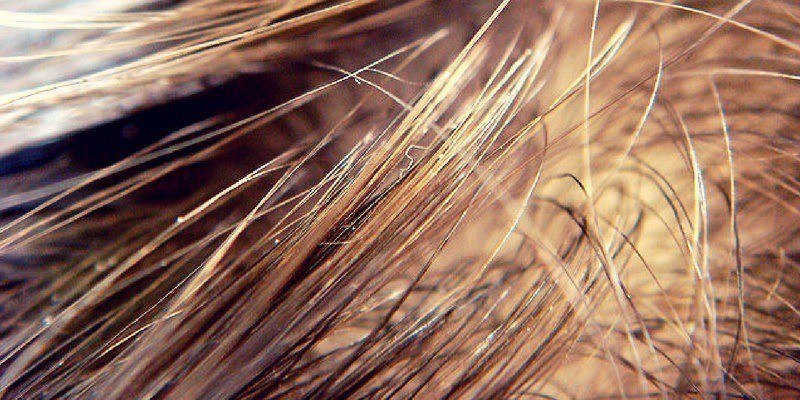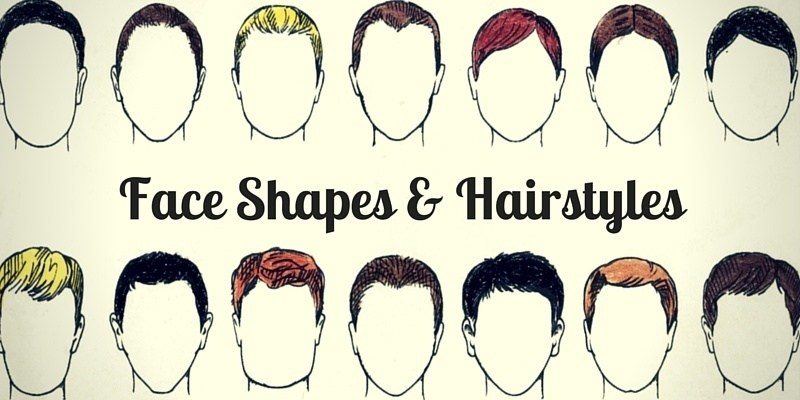Any discussion on hair care nowadays will sooner or later bring up the topic of silicones and whether they do more harm than good for your hair.
This is just part of an increasing trend. Years ago most people paid very little attention to the ingredients listed on product labels. Now? It’s like we’ve become part-time chemists obsessing over the label trying to figure out what all those ingredients do.
They’ve become an easy target for the natural hair community which isn’t much of a surprise considering that probably over half of all beauty products contain at least one silicone-based ingredient.
But when you’re shopping for a new shampoo or conditioner and see a product boast that it’s “non-silicone” or “silicone-free” — what does that really mean?
As we’ve come to realize in life, there are two sides to every story.
Our goal is to help you learn what they couldn’t fit on the product label and present you with the facts.
First we’ll explain what exactly silicones are before we get into their benefits and downsides. Next we’ll cover the different types and list some of the more common ones you might encounter and what you need to know about them. This will help you choose better products and figure out whether they’re right for your hair. Finally we’ll conclude with some tips on getting rid of buildup – a common problem with nearly all silicone ingredients.
Now let’s get started!
What Are Silicones? How Do They Work?
Silicones are a family of synthetic ingredients mostly composed of hydrogen, oxygen, carbon, and as you’d imagine silicon atoms. These atoms come together to form chains of molecules called polymers. The length and shape of these polymers then determine how thick or light the silicone will feel on your hair.
Thanks to the versatility of their chemical structure they also have a variety of uses beyond cosmetics. They can be found in household caulk or in lubricants and adhesives for example.
They’re often compared to rubber or plastic which may seem odd when you consider we actually put the stuff on our hair and skin. But these rubber-like and plastic-like properties are exactly what make them so effective in your hair care routine if used correctly.
Essentially what they do is create an extra layer over the shaft of each hair follicle by coating them and effectively sealing the cuticle from external elements whether it be moisture, heat, sebum, or grime.
Thanks to their heat-resistant and water-proof like properties they’re often found in heat protectants as well as shampoos, conditioners, gels, serums, and nearly every other type of hair product.
Another reason they’re so common is because they’re safe non-toxic ingredients with a very low probability of causing a negative reaction. So yes while they’re artificial ingredients remember that artificial doesn’t necessarily mean bad.
How They Benefit Your Hair
Now that you have a basic understanding of what they are let’s talk more about what they can do to help your hair.
Simply put, silicones make dry and damaged hair appear healthy. They help soften your hair giving it a silky smooth type feel by adding slip and making it shinier.
Most of them are also hydrophobic which means they’re not soluble in water. This can be a blessing or a curse. Since they block water from reaching your hair they reduce its porosity making it less capable of absorbing moisture from the air. This is how it achieves its smoothing and straightening effect. Of course, if that’s not the look you’re going for it might be a problem (we’re talking about you curly hair types).
This sealing property is also what helps it lock in conditioner and fight off frizz by making it “immune” to humidity so to speak.
Not to mention their slippery feel reduces the friction between strands which comes in handy when brushing or blow-drying because it stops split-ends and helps detangle when your hair’s wet. This in turn can prevent breakage before it happens.
Silicone Free Shampoo Benefits
We may have made silicones sound like miracle ingredients just now so why do they get so much flak?
We touched on it before — silicones only make your hair appear healthier. They don’t actually improve its health.
Think of it like putting a band-aid over a serious wound. It might stop the bleeding but it’s only a temporary fix.
The number one problem is that since most of them are not water soluble they build up over time. This buildup weighs your hair down which make it look limp, dull, and what some might call lifeless. In other words the opposite of healthy.
Remember how we mentioned they create a water-proof seal over each strand of hair? This is good for avoiding frizz but over longer periods of time it makes it harder for your hair to maintain proper hydration, for the nourishing ingredients of other products like conditioners to reach the hair shaft, and for the natural oils your scalp produces to reach the ends of your follicles. These natural oils are the cause of real shiny hair and not artificial shininess.
So really the long-term result of using silicones is greasiness (thanks to the silicones attracting dirt and grime) and dry hair (since they prevent moisture from reaching those fragile tresses).
This can spell out disaster for curly hair types which already have a hard enough time of keeping their curls hydrated.
The buildup that accumulates over time also leads people to wash their hair more often and to use more styling products which causes further damage and creates a cycle of hair abuse. Not good!
Common Silicone Ingredients Found In Hair Products
You’ll never see a product labeled as simply containing silicones. Instead you’ll find the specific kind which means you have to know what to look for when reading the label.
An easy way to identify them is to look for ingredients that end with the suffix “-xane” or “-cone”.
There are many different kinds of silicones but they can roughly be split into two groups: easy to wash off and hard to wash off.
Now let’s go over each of them.

Easy To Wash Off Silicones
This category can further be split into two subcategories – silicones that evaporate and silicones that are water-soluble.
Silicones that evaporate are comprised of volatile molecules that disintegrate when exposed to the air. This means they stay on your hair temporarily often as little as half an hour but sometimes up to 10 or 12 hours. This is relatively short compared to other types which can stay on days after. So the good news is you don’t have to worry about buildup.
The most common of these types is cyclomethicone. They often follow the naming convention of containing the word “cyclo” followed by other letters before ending with the word “siloxane.”
Here are some examples:
- Cyclopentasiloxane
- Decamethylcyclotetrasiloxane
- Hexamethylcyclotrisiloxane
- Hexamethyldisiloxane
- Octamethylcyclotetrasiloxane
Overall these are good for combing or brushing since they’ll help make your hair more slippery before naturally evaporating into the air.
Water-Soluble Silicones
Other easy to come off silicones that don’t evaporate are designed to be water-soluble. The downside to this type is that they do buildup over time although less so than the harder to wash off types. You can easily identify these types when you see the letters PEG or PPG followed by a number before the specific ingredient. This means they have been modified to be water-soluble.
These often (but not always) contain the word methicone in their names.
Here are examples:
- Dimethicone copolyol
- Dimethiconol
- Disiloxane
- Lauryl methicone copolyol
- Phenyl trimethicone
- Silica
The plus with these types is that they’re more effective at conditioning since they can stay on longer.
Hard To Wash Off Silicones
This group can also be split into two subcategories: those with none or very little buildup and those with a lot of buildup.
The ones that have little buildup but are hard to wash off are most useful as deep conditioners or leave-in products for repairing damaged hair. Once they coat your hair, no other product including water is getting underneath that layer until you properly wash it off. More on that in the next section.
Anyways the most common of this type is dimethicone or dimethicone copolyol.
Here are other examples:
- Aminopropyl dimethicone
- Aminopropyltriethoxysilane
- Amodimethicone
- Polydimethylsiloxane
Typically ingredients that begin with the prefix “amo”, “amine” or “amino” fall into this category.
Heavy buildup
The final category you might consider the worst. These are hard to wash off and have lots of buildup. In other words the worst of both worlds. They’re the most prone to making your hair greasy, ruining its natural texture, and making it feel heavier so use with caution.
Look for the word “stear” in their names to find this type.
Other examples:
- Cetyl dimethicone
- Cetearyl methicone
- Stearoxy dimethicone
- Stearyl dimethicone
- Stearyl methicone
- Trimethylsilylamodimethicone
We would steer clear of these ingredients because it’s just not worth it. If you do have products that contain them, you’re going to need this next section!
How To Get Silicones Out Of Hair
The key to removing buildup is shampoo. Specifically, clarifying shampoo. These shampoos are basically deep cleansers that are like ordinary shampoos but with cleansing superpowers.
They’re much more effective at getting through gunk and grease as well as at breaking down silicone. After using one you will need to follow up with a deep conditioner (preferably one without silicones) because they can be very drying.
This is why you typically don’t want to use these types of shampoos more than once a week. Especially if you have very thick, coarse, and curly hair. If this sounds like you stick to milder sulfate-based shampoos or use clarifying shampoos more sparingly. Once a month for example. We don’t ordinarily recommend sulfate shampoos because they’re also very harsh but they can do a decent job of cutting through layers of silicone too.
Another thing to look out for is an ingredient called cocamidopropyl betaine. This is a surfactant that happens to be somewhat irritating on sensitive skin but can break down silicones effectively. It’s derived from coconut oil believe it or not but is much more powerful.
Lastly we want to mention baking soda because some people have recommended using it as a home remedy to get rid of silicones. Our take: not a good idea. Baking soda isn’t going to do much if anything except possibly dry your hair out even more.
Conclusion
We hope you found this guide on silicones helpful. They can certainly play an effective role in your hair care regimen if used properly but if you don’t address their downsides they’ll hurt more than they help.
To quickly recap the main points of what we covered today:
- Silicones are slippery plastic-like ingredients that add shine and help protect hair from heat, moisture, and anything else it might encounter.
- They have a tendency to buildup over time and are hard to remove.
- Look out for the common naming patterns to identify the different types of ingredients.
- Use a clarifying shampoo once a week or if your hair is usually dry every other week or once a month.
- A mild shampoo with sulfates or one containing cocamidopropyl betaine works well for coarse coil like hair.
If you’d like to hear the latest from us keep in touch on Twitter or Pinterest (@maxmylooks).



